Surya Namaskar (Sun Salutation): The Ultimate Yoga Practice for Fitness and Wellness
Published On : 30th Sep 2025
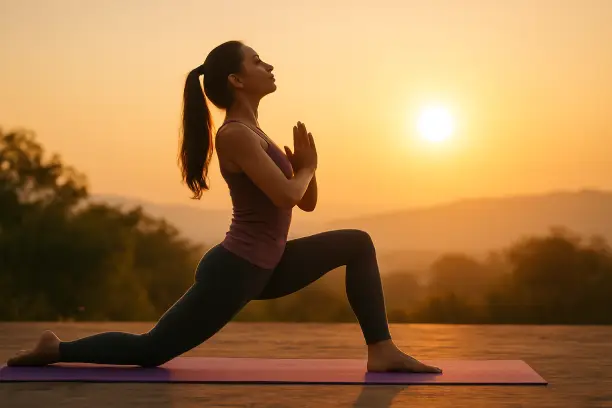
In the fast-paced world we live in, maintaining physical and mental health has become essential. Yoga offers one of the best natural solutions to achieve this balance. Among the countless yoga practices, Surya Namaskar, also known as Sun Salutation, stands out as a powerful sequence that works on the body, mind, and spirit.
Yoga Surya Namaskar, also known as the Sun Salutation, is a sequence of 12 powerful yoga poses performed in a flowing series. It’s traditionally practiced at sunrise to honor the sun and energize the body. Beyond its spiritual significance, Surya Namaskar is a complete workout that improves flexibility, strengthens muscles, and supports mental clarity.
Practicing it regularly can help in weight management, improve posture, reduce stress, and enhance overall health. Whether you are a beginner or an advanced yoga practitioner, integrating Surya Namaskar into your routine can bring noticeable benefits.
What is Surya Namaskar?
Surya Namaskar is a series of 12 yoga postures performed in a sequence, synchronized with controlled breathing. It is traditionally practiced in the morning to honor the sun, which is considered a source of life and energy.
This practice combines yoga, pranayama (breathing), and meditation, making it a complete workout for overall well-being.
Step-by-Step Guide to Surya Namaskar
Each step of Surya Namaskar is done with a specific inhalation or exhalation, making it a mind-body synchronization practice.
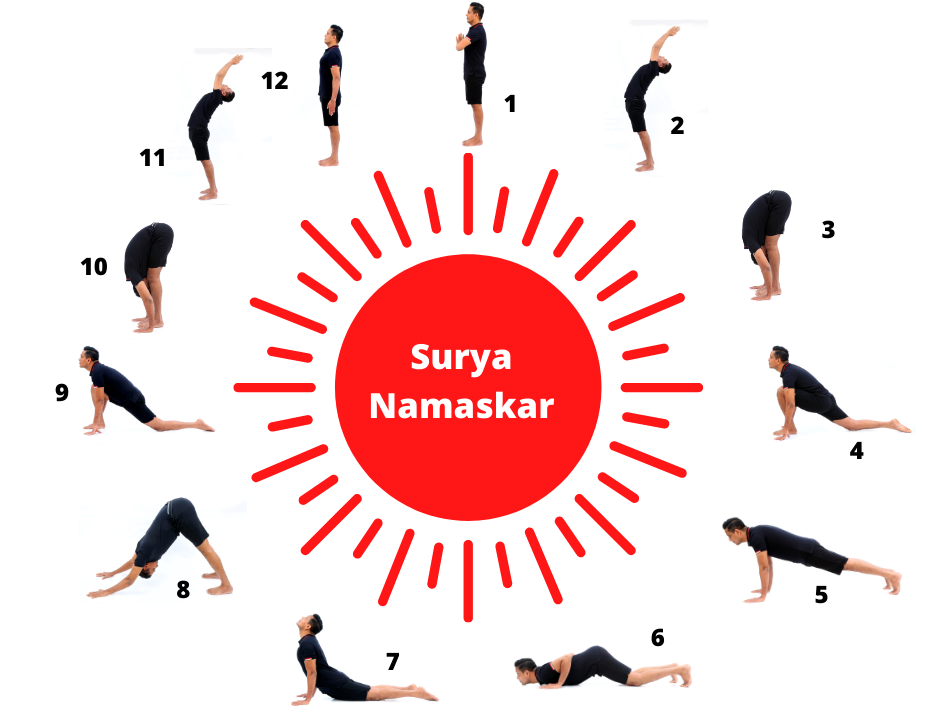
- Pranamasana (Prayer Pose):
- Stand upright, feet together, palms joined at the chest in prayer position.
- Breathing: Exhale.
- Benefit: Calms the mind, improves focus, and sets the intention.
- Hastauttanasana (Raised Arms Pose):
- Stretch arms overhead, gently arch back, pushing hips forward.
- Breathing: Inhale.
- Benefit: Expands lungs, improves digestion, tones arms and shoulders.
- Padahastasana (Hand to Foot Pose):
- Bend forward from hips, touch palms to floor beside feet.
- Breathing: Exhale.
- Benefit: Improves flexibility, massages abdominal organs, strengthens spine.
- Ashwa Sanchalanasana (Equestrian Pose):
- Stretch right leg back, keep left foot between palms, look upward.
- Breathing: Inhale.
- Benefit: Strengthens legs, improves lung capacity, enhances hip flexibility.
- Dandasana (Plank Pose):
- Push left leg back, body in a straight line like a plank.
- Breathing: Hold breath.
- Benefit: Strengthens core, arms, wrists, and tones abdomen.
- Ashtanga Namaskara (Eight-Limbed Salute):
- Lower chest, knees, and chin to the floor; hips raised.
- Breathing: Exhale.
- Benefit: Builds upper body strength, improves flexibility of spine.
- Bhujangasana (Cobra Pose):
- Slide forward, raise chest upward, elbows close to body.
- Breathing: Inhale.
- Benefit: Stimulates digestive organs, strengthens spine, reduces stress.
- Adho Mukha Svanasana (Downward-Facing Dog Pose):
- Lift hips upward forming an inverted V-shape.
- Breathing: Exhale.
- Benefit: Improves blood circulation, stretches hamstrings, relieves fatigue.
- Ashwa Sanchalanasana (Equestrian Pose):
- Step right foot forward, between palms, left leg stretched back.
- Breathing: Inhale.
- Benefit: Improves balance, flexibility of legs, tones lower body.
- Padahastasana (Hand to Foot Pose):
- Bring left leg forward, bend down touching feet with palms.
- Breathing: Exhale.
- Benefit: Enhances flexibility, strengthens spine, stimulates metabolism.
- Hastauttanasana (Raised Arms Pose):
- Stretch arms upward, arch back slightly.
- Breathing: Inhale.
- Benefit: Opens chest, tones arms and shoulders, improves posture.
- Pranamasana (Prayer Pose):
- Stand straight, palms joined at chest.
- Breathing: Exhale.
- Benefit: Restores calm, improves focus, brings balance.
👉 One complete cycle = 12 steps (do both right and left leg in step 4 & 9).
👉 Beginners can start with 4 rounds, and gradually increase to 12 or more.
You can also refer the help video below.
Health Benefits of Surya Namaskar
Practicing Surya Namaskar regularly provides holistic benefits for physical fitness, mental health, and spiritual growth.
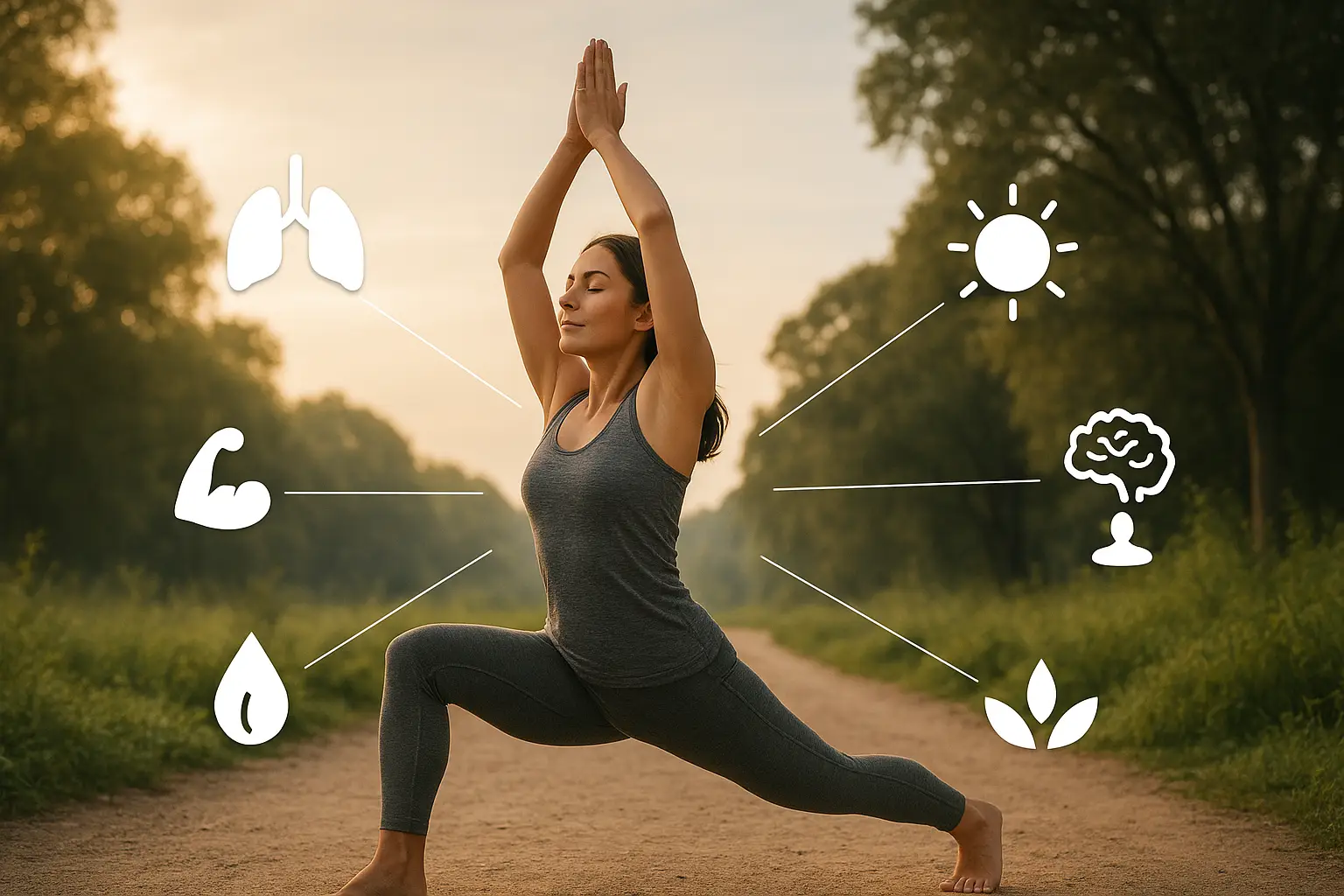
🔹 Physical Benefits
- Full-Body Workout: Activates all major muscles including arms, chest, legs, abdomen, and spine.
- Boosts Flexibility: Stretches and strengthens muscles, ligaments, and joints.
- Improves Digestion: Forward bends massage internal organs, improving metabolism.
- Enhances Lung Capacity: Deep breathing oxygenates blood and energizes the body.
- Aids Weight Loss: Increases metabolism and calorie burn when practiced at a fast pace.
- Detoxifies the Body: Sweating and deep breathing eliminate toxins.
- Improves Posture & Balance: Strengthens core and back muscles.
🔹 Mental Benefits
- Reduces Stress & Anxiety: Rhythmic breathing relaxes the nervous system.
- Improves Concentration: Synchronizing movements with breath sharpens focus.
- Boosts Energy Levels: Practicing in the morning activates the body and mind.
- Enhances Sleep Quality: Relieves fatigue and promotes deep rest.
🔹 Spiritual Benefits
- Balances Mind & Body: Brings harmony between physical and mental health.
- Promotes Mindfulness: Breath awareness enhances self-awareness.
- Connects with Nature: Traditionally done facing the sun, symbolizing gratitude and vitality.
Best Time to Do Surya Namaskar
While Surya Namaskar can technically be practiced any time of the day, the timing plays a significant role in maximizing its benefits.
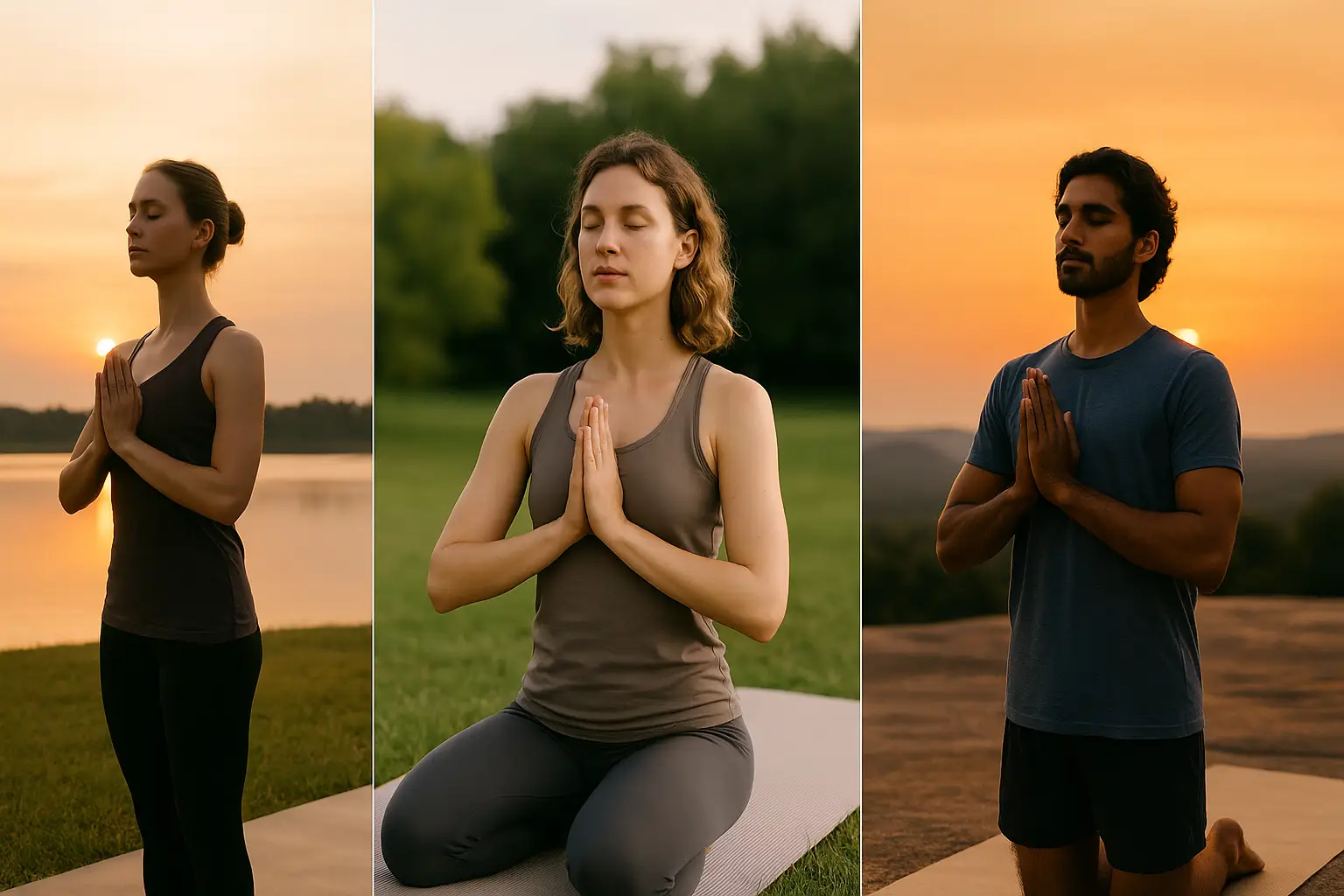
- Early Morning (Sunrise – 5 AM to 7 AM): Practicing Surya Namaskar at sunrise is considered the most beneficial. At this time, the air is fresh, oxygen levels are high, and the body feels lighter. It energizes you for the day, improves metabolism, and boosts mood.
- Late Morning (After Sunrise): If early mornings are not possible, late morning sessions still help improve flexibility, reduce stiffness, and enhance energy levels. Just make sure you practice on an empty stomach.
- Evening (Around Sunset): Evening practice works best for those who want relaxation after a busy day. It helps release stress, relax muscles, and prepares the body for restful sleep.
- Golden Rule: Always practice on an empty stomach or after at least 2–3 hours of a light meal. This prevents discomfort and ensures smooth breathing during the postures.
👉 Tip: If your goal is weight loss, mornings are best. If your goal is relaxation and stress relief, evenings are better.
Ideal Environment for Practicing Surya Namaskar
Your surroundings can make a big difference in how effective and enjoyable your Surya Namaskar practice is. Creating the right environment sets the mood and helps you stay consistent.
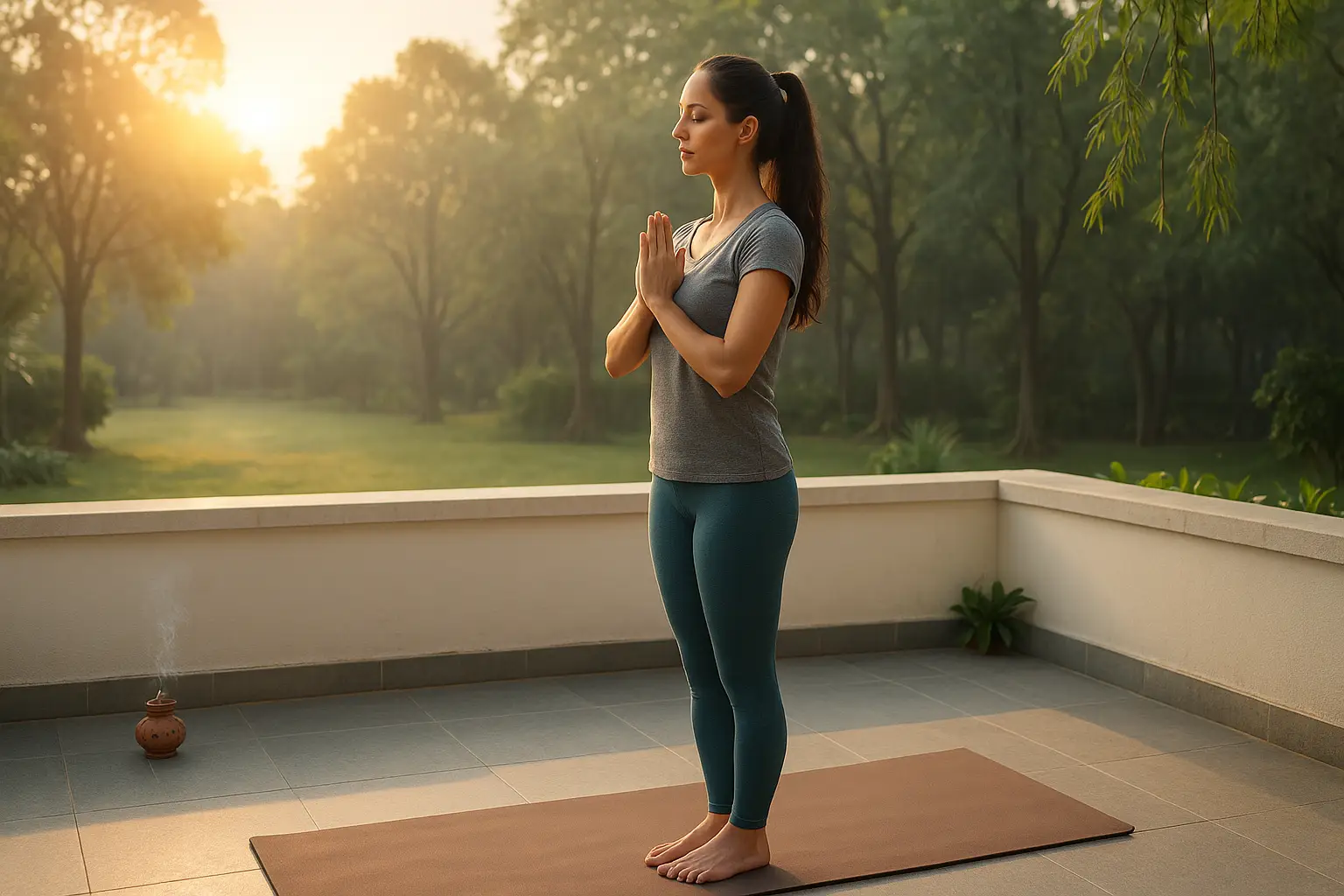
- Choose a Calm and Quiet Space: A clutter-free environment allows better focus. Ideally, practice in a room with good ventilation or outdoors in a garden or balcony.
- Face the Rising Sun: Traditionally, Surya Namaskar is done facing east during sunrise. This helps absorb the morning energy and aligns with the spiritual essence of the practice.
- Use a Comfortable Yoga Mat: A good-quality mat provides grip and prevents strain on joints. Natural mats (cotton/jute) are often preferred for traditional practice.
- Wear Breathable Clothing: Loose, comfortable clothes allow free movement and proper blood circulation.
- Maintain Cleanliness: A clean environment promotes positive energy. Lighting an incense stick or playing soft instrumental music can help set a calm vibe.
- Consistency Matters: Practicing at the same place and time daily helps build habit and enhances discipline.
Tips for an Effective Surya Namaskar Practice
- Warm up before starting.
- Focus on breathing (inhale while stretching, exhale while bending).
- Do it on an empty stomach for best results.
- Practice on a yoga mat in a ventilated space.
- Increase rounds gradually for sustainable benefits.
Conclusion
Surya Namaskar is not just a physical exercise; it is a spiritual practice that brings harmony between body, mind, and soul. By incorporating it into your daily routine, you can achieve fitness, inner peace, and long-term wellness.
🌞 Start your mornings with Surya Namaskar(Sun Salutation) and experience the transformation it brings to your health and lifestyle.
Frequently Asked Questions
Beginners can start with 4–6 rounds and gradually increase up to 12–24 rounds for maximum benefits.
Yes, practicing Surya Namaskar regularly boosts metabolism and helps burn calories effectively.
It is best to avoid during the first two days of menstruation. Gentle yoga poses can be practiced instead.
Yes, but start slowly, focus on breathing, and avoid straining your body.




